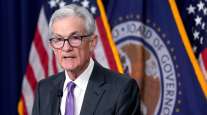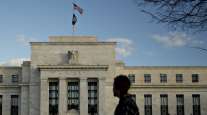Bloomberg News
Federal Reserve Injects $75 Billion in Liquidity

[Stay on top of transportation news: Get TTNews in your inbox.]
The Federal Reserve added a third dose of liquidity to a vital corner of the funding markets Sept. 19, helping rates retreat further as investors warn that fresh bouts of stress remain possible in the weeks ahead.
The New York Fed injected another $75 billion through an overnight repo operation. That followed a dose of the same size Sept. 18 and $53.2 billion Sept. 17. The operations, commonplace in pre-financial crisis times, temporarily add cash, with the Fed taking government securities as collateral. Wall Street bond dealers submitted about $84 billion of securities for the Sept. 19 Fed action, the most in the three days.
“Look for another operation tomorrow given rising submissions,” FTN Capital strategist Jim Vogel wrote in a note.
The latest addition of liquidity — with the Fed making clear it’s ready to do more as needed — follows the Federal Open Market Committee’s move Sept. 18 to reduce the interest rate on excess reserves, or IOER, by more than their main interest rate — all attempts to quell money-market stresses.
The operations have calmed the funding market, with repo rates declining to more normal levels after soaring to 10% on Sept. 17, four times last week’s levels. Overnight general collateral repurchase agreement rates continued to retreat Sept. 19, trading around 2.05%, according to ICAP. Still, most investors say more Fed action is needed for a permanent fix, with gauges of dollar funding costs measured through the current swaps market showing pressures building again given disappointment over the steps the central bank took.
WANT MORE NEWS? Listen to today's Daily Briefing
The effective fed funds rate was set at 2.25% as of Sept. 18. It was at 2.30% Sept. 17, above the top of the Fed’s target range of 2% to 2.25% before policymakers lowered their benchmark rate Sept. 18.
“We expect these episodes of funding stresses to become more frequent with demand for funding and U.S. Treasury supply forecast to increase heading into year-end and the Fed’s reserve levels likely to drop further,” Jerome Schneider, head of short-term bond portfolios at Pacific Investment Management Co., wrote in a note Sept. 18 with his colleagues.

Federal Reserve Board Chairman Jerome Powell (Andrew Harrer/Bloomberg News)
Given the added supply, banks’ holdings of Treasuries have risen and are increasingly being financed by money market funds investing in repo, which leaves “U.S. funding markets more fragile,” Schneider wrote. He said this adds to other reasons why the Fed needs to do more to engineer a long-term fix.
After policymakers wrapped up a two-day meeting Sept. 18, Fed Chairman Jerome Powell said the central bank will keep doing these repo operations if that’s what it takes to get markets back on track. He spoke hours after the effective Fed funds rate busted through the central bank’s cap, evidence Powell and his colleagues were losing their grip on one of their most important levers for controlling the financial system.
Powell also said the Fed would provide a sufficient supply of bank reserves so that frequent operations like the ones they’ve done this week aren’t required.
The only way “to permanently alleviate the funding stress is to rebuild the buffer of reserves in the system,” according to Morgan Stanley strategist Matthew Hornbach.
Relying on repo operations doesn’t resolve the issue of reserves declining as the Treasury rebuilds balances, Hornbach wrote in a note. Having regular operations will also increase market uncertainty as the Fed could halt purchases at any time, while the size of its buying will have to expand over time as reserves drop, he said.
“It is certainly possible that we’ll need to resume the organic growth of the balance sheet sooner than we thought,” Powell said, referring to the central bank potentially buying securities again to permanently increase reserves and ensure liquidity in the banking sector.
Many strategists had predicted the Fed would take even more aggressive measures to reduce the pressures. One idea that’s gotten a fair amount of attention is something called a standing fixed-rate repo facility — a permanent way to ease funding pressures, as opposed to the ad-hoc operations the Fed has used this week. Many analysts even predicted a Sept. 18 announcement that the Fed would start expanding its balance sheet.
That didn’t happen. However, with the Fed apparently ready to keep injecting liquidity whenever it’s needed, “it’s enough for now,” said Jon Hill of BMO Capital Markets.
“This week’s dramatic moves in the short-term funding markets serve as a case in point for the need to carefully consider liquidity in the financial system,” Rick Rieder, global chief investment officer of fixed income at BlackRock Inc., wrote in a note.
“All of this funding market gyration points to the increasingly obvious fact that the end of Fed reserve draining is insufficient to stabilize these markets,” he said.




